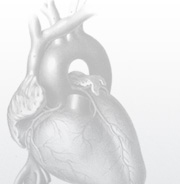Overview
About STEMI

Guidance for STEMI Management
Based on International and South African guidelines
Supported by SA Heart (South African Heart Association) and SASCI (SA Society of Cardiovascular Intervention)
International guidelines emphasize early appropriate treatment for S-T elevation Myocardial Infarction (STEMI) - Infarction with total occlusion of a coronary artery – where “Time is Muscle”. To save heart muscle when a coronary artery closes this occlusion needs to be opened as soon as possible with medication and / or an intervention in a catheterizati0on laboratory. After 3 hours of occlusions little further muscle can be saved.
What is needed to achieve this successful Management?
1. Patients need to be educated to recognize the symptoms.
2. Patient need to be educated what to do – know the numbers to phone – know where to go as soon as possible.
3. Health care facilities at the first medical contact should perform ECG immediately on all patients that present with chest pain unless a very clear alternative cause is obvious. These patients should not sit and wait for a turn to be seen but have at least an ECG done immediately.
4. Health care professional staff should be familiar with treatment options for STEMI and immediately start therapy whether that be pharmacologic thrombolysis and then transfer or immediate transfer to a catheterization laboratory for coronary intervention to open the blocked artery.
5. Thrombolytic therapy with either Tanecteplase; Actilyce or Streptokinase should be available at least at all secondary health care facilities.
6. Health care professional staff should have access to cardiologist of other trained professionals to assist with decision making and transfer.
7. All specialist facilities are encouraged to participate in the SA Heat SASCI STEMI Early Reperfusion Registry to document date and outcome to assist with future interventions
The SA Heart-SASCI STEMI Early Reperfusion program
Cardiologists, Cardiothoracic Surgeons, Paediatric cardiologists; Cardiology Technologists and Radiographers as well as registered nurses working in Catheterization laboratories and other medical professionals from both private and public health care environment, belong to this professional society. SA Society of Cardiovascular Intervention (SASCI) is a subgroup from SA Heart with primary interest in diagnostic and therapeutic interventional procedures. One of our missions is to contribute to improvement of cardiac health care in South Africa.
Our STEMI Early Reperfusion program is similar to programs in India, Europe and USA with whom we work together. Education of all health care professionals, including emergency care professionals, started in Pretoria and its referral areas and will now be extended to the rest of Gauteng and South Africa. Clear Algorithms are available to the health care worker as to what to do next and when and where to refer the patient to get this artery open as soon as possible. If a patient can be in a catheterization laboratory within 90 minutes, that would be the preferred route. Should this not be possible thrombolytic therapy should be given once contra indications have been excluded before referring the patient as soon as possible for coronary angiography within the next 24 hours. After 24 hours coronary angiography is more of a diagnostic investigation than therapeutic unless there are ongoing chest pains or other ischaemic symptoms.
The reality is that far too many patients with STEMI get no Reperfusion – Attempt to get the artery open – at all due to lack of access to health care and then the unavailability of thrombolytic therapy and the means for transportation for appropriate care. Primary PCI (Percutaneous Coronary intervention) to open the artery are only for those being able to be in a PCI capable hospital within 90 minutes. These hospitals are limited to metropolitan areas with two of our provinces with not even one facility available and half of interventional cardiologists working in Gauteng. With this program we can save lives but more importantly leave those affected with better cardiac function on appropriate therapy to continue a productive life rather than claiming medical disability and be a burden to society.
This program will assist in improved public private networking for effective management of these patients. Getting public health care on board is another priority for the next 18 months. Our registry into which these cases data are entered will also be expanded to obtain data on the risk factors for cardiovascular disease in all patients who present with chest pain to a participating clinic.
This program is run under the auspices of SA Heart and SASCI with National – Regional and Hospital Champions (cardiologists) taking responsibility together with administration and research team. We hope to get more colleagues involved with this program as it can form a nidus for more extended co-operation.
We work with STEMI India who were able to develops systems of care that can included both public and private patients in the same program by developing communication tools and taking care of registered BPI (below poverty income) patients who get funded from a regional or national social insurance scheme paid for by government. In an environment with scarce resources working as a team is the only way to avoid the increasing gap in quality health care between affluent and poor inhabitants of South Africa.
This program is made possible by the financial and logistic support we receive from industry as well as time given by cardiology colleagues. Our activities are limited by local resources and working with groups like STEMI India assists us to move ahead with this strategy.
A STEMI INDABA to improve patient access to appropriate therapy and improve networking between private an public health care are being planned for 2016. A Successful program can have a significant tenfold impact on mortality and morbidity of this major NCD in South Africa
Dr Adriaan Snyders
National Champion South Africa for STEMI Early Reperfusion

